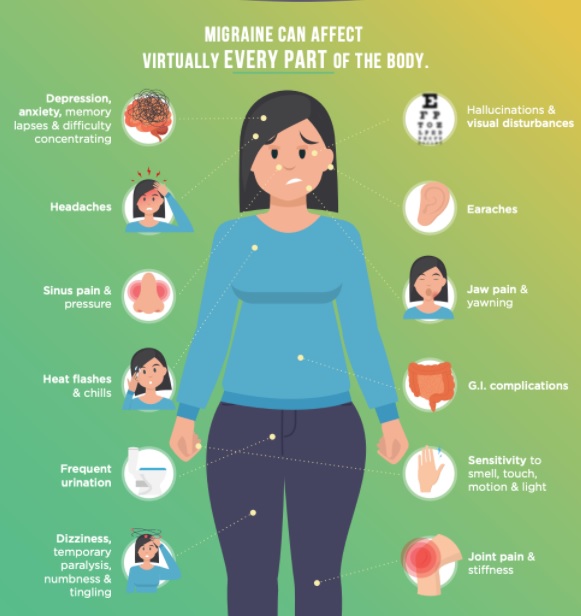June is National Migraine and Headache Awareness Month (MHAM), which presents an opportunity to raise awareness about migraine and other headache diseases. Migraine impacts forty million people in the United States, one billion people across the globe, and is recognized as the #2 cause of disability worldwide. Currently, about 16 million people with migraine in the U.S. are undiagnosed. Approximately 400,000 Americans experience cluster headaches, recognized as one of the most painful diseases a person can have, according to the Coalition for Headache and Migraine Patients.
This year, MHAM is focused on ‘A New Era of Care’ and the impact of COVID-19 on individuals with migraine and other headache diseases.
“There is currently no cure for migraine, but we are in a renaissance of new treatments, therapies, and approaches to managing the disease,” explained Wendy Bohmfalk, Chairperson of the MHAM Committee. “If you have been struggling in silence, now is the time to speak up, educate yourself, and seek care. You might just change your life.”
A New Era of Care & COVID-19 Impact
During the pandemic there has been a significant rise in telemedicine. According to a survey by the Headache and Migraine Policy Forum and Migraine Again, 78% of migraine and headache patients used telemedicine after the start of the pandemic, in comparison to just 22% before the pandemic. This trend is ushering in a new era of care, where patients can interact with health professionals from the convenience and comfort of their homes. The survey also revealed that there has been a nearly 70% rise in the number of migraine attacks during the pandemic and 84% of people have more stress managing their disease.

On the treatment front, there are new options for patients to explore. “Migraine and headache patients now have more options due to a wave of innovation in acute and preventive care,” noted Dr. William Young, Professor of Neurology, Thomas Jefferson University and Medical Advisor for the Coalition for Headache and Migraine Patients. “These include CGRP monoclonal antibodies, gepants, lasmiditan, and several neuromodulation devices.”
Advocacy Events
“Migraine and headache diseases are invisible illnesses, but our community includes more than 40 million Americans that are standing up, fighting stigma, and demanding to be seen, treated effectively, and respected,” explained Kevin Lenaburg, Executive Director CHAMP (Coalition for Headache and Migraine Patients).
MHAM events are updated online on a regular basis and can be accessed by clicking HERE.
To learn more about the differing types of headaches, click HERE.






